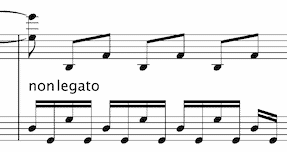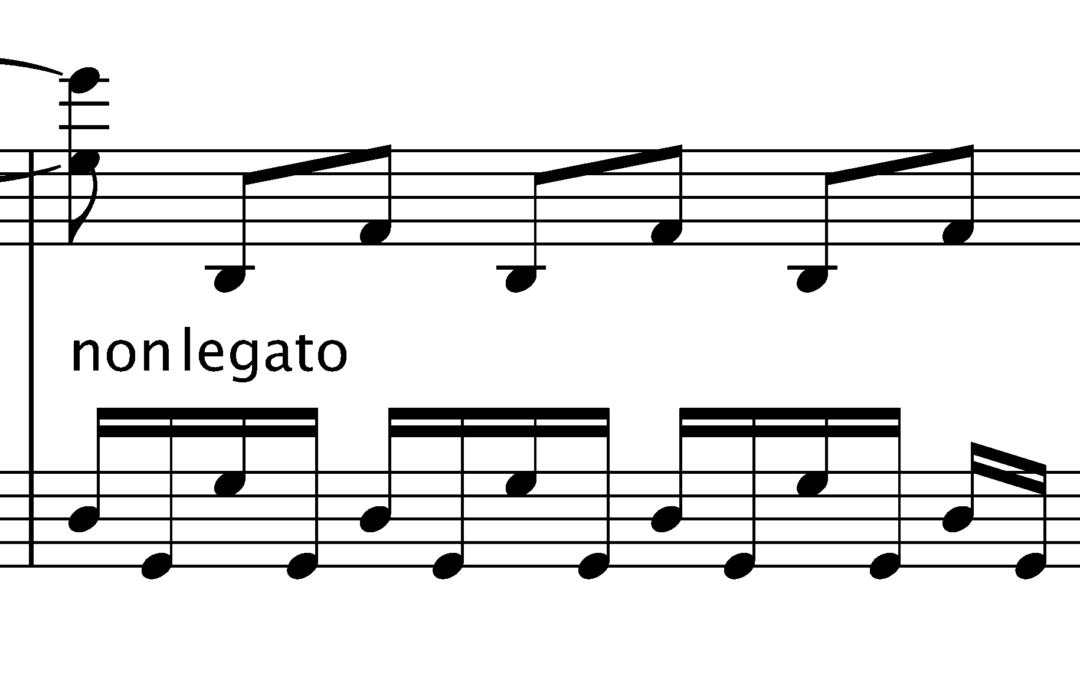Non-legato is a common articulation found in a pianist’s pianistic vocabulary.
It goes without saying that non-legato is poles apart to legato, but it is also different to its “shortened” relatives, such as the staccato and tenuto. Staccato, for instance, is more commonly understood and honoured, but non-legato on the other hand can often be misinterpreted or conveniently neglected, since, well, there’s nothing to indicate its presence. No special sign (like the dash on a tenuto note) or anything to, at least, make us feel guilty if we failed to act upon on this discretely nuanced articulation.
And here comes one of my eternal internal questions, that I every so often bring up in gatherings, and it usually goes like this:
“ Hi guys!” (me talking)
“Oh…. Um…. Hi Nikos, we are very…. um… happy that you caaame…”
“How’s things?!”
“Well, not so bad. Yourself? How’s…. um… life?”
“Yeah, not too bad at all. Should a non-legato have its own, special and unambiguous sign?”
Well, most of my partying “interviewees” would laugh and promptly dismiss my question, and, to be honest, I wouldn’t blame them.
Firstly, because this non-legato versus mezzo-staccato, versus tenuto, versus detached-playing extravaganza has baffled one too many pianists since the advent of the modern piano. Secondly, because, who am I to even ask this juvenile question and, thirdly, because not everything in life should be served on a plate. Right? Sometimes in life we should just do something not because it is just spelled out to us but because it may belong to a customary tradition; that means, in our piece we may just play non-legato because that’s how that particular piece is always being played.
 Figure 1: From Rachmaninov’s prelude No.3 Op.32; Did Rachmaninov wanted staccato here? Maybe he desired tenuto or mezzo-staccato? Maybe. Who knows? I think he wanted non-legato: very energetically and non-mellowing playing.
Figure 1: From Rachmaninov’s prelude No.3 Op.32; Did Rachmaninov wanted staccato here? Maybe he desired tenuto or mezzo-staccato? Maybe. Who knows? I think he wanted non-legato: very energetically and non-mellowing playing.
Non legato is an articulation in its own right. Even though we can argue that non-legato literally means the absence of legato, however it is not wise to just determine that non-legato articulations are either attached to the staccato or the tenuto denominations.
Here are some of the main points that we should be able to call to mind when we are faced with the conundrum of the non-legato:
- Non-legato is indeed a unique articulation. For many pianists and scholars non-legato signifies a group of articulations that are not legato. Read some more about non-legato here.
- Non-legato is (obviously) different to staccato, staccatissisimo and any other articulation that includes staccato in its body and, frankly, should not emanate the… staccatiness of the staccatoed
- Non-legato is different to tenuto since it does not require the sense of ceaseless compression—as if you were to crescendo a note.
- Non-legato is different to portato since there is no need to pronounce a note (more obvious is long non-legato passages).
- In non-legato there are normally no slur or dot marks above a note—or any other marks, for that matter.
- Non-legato interpretation depends, amongst others, on:
- Type of passage (non-legato could be articulated differently within the same piece).
- Composer; It could have a different essénce amongst composers.
- Provenance of a particular musical interpretation of the same work.
- Duration of all non-legato notes within the same passage should be comparable.
- If we were forced to declare the precise duration of a non-legato note (be it quaver, crotchet or other) we would say (albeit hesitantly) that it should be held for 80% of a note’s original duration—a bit less and it should linger on the staccato sphere, a bit more and it could be mistaken to leggiero.
Copyright © 1st of April 2020 by Nikos Kokkinis
===
Here’s how to support the writings of this website in a mutally beneficial way:


